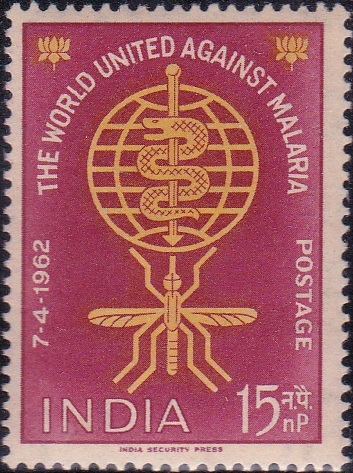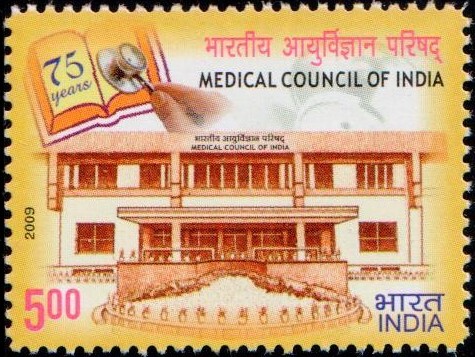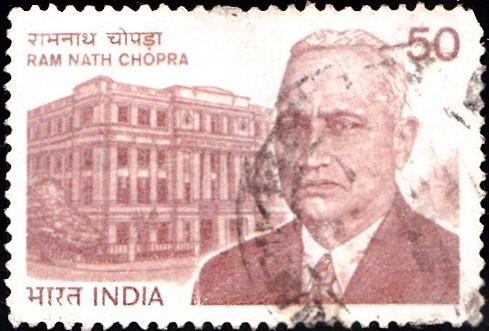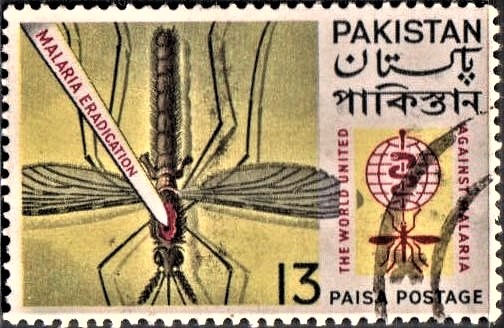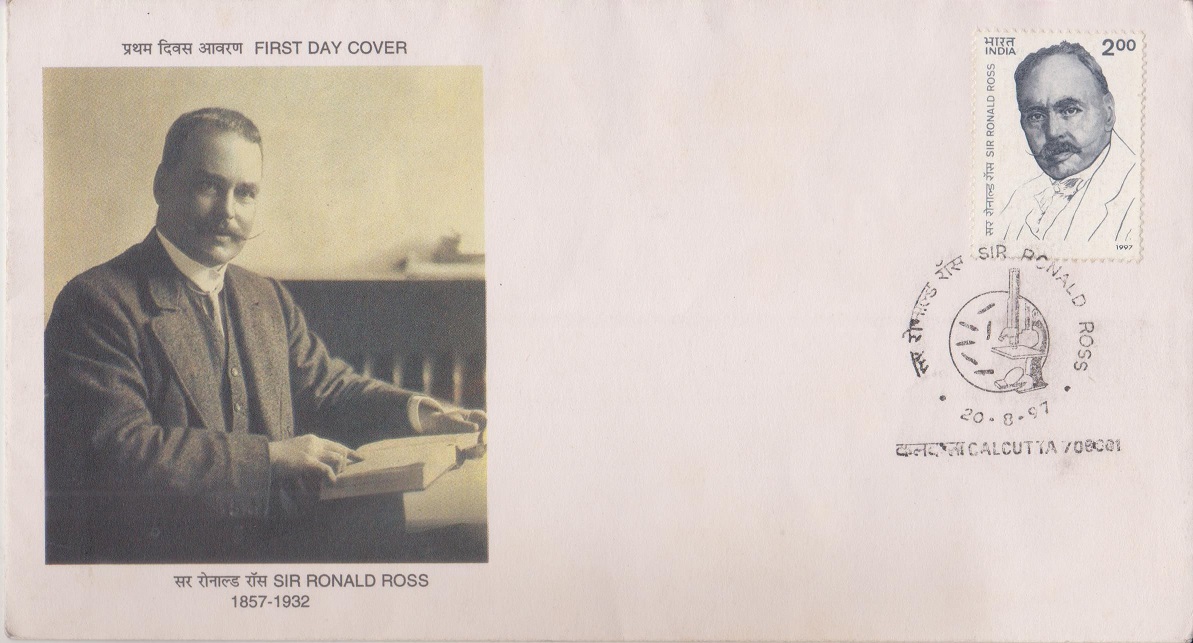
India on Ronald Ross
A commemorative postage stamp on Sir Ronald Ross, first British Nobel laureate (medicine 1902) for his work on the transmission of malaria :
 Issued by India
Issued by India
Issued on Aug 20, 1997
Issued for : The Department of Posts is issuing this special postage stamp as a homage to Sir Ronald Ross, whose memory is cherished by mankind even after the lapse of one hundred years.
Credits :
Stamp design, FDC design : Director, Malaria Research Centre
Type : First Day Cover
Colour : Single Colour
Denomination : 200 Paise
Overall size : 3.91 x 2.90 Cms.
Printing size : 3.55 x 2.54 Cms.
Perforation : 13 x 13
Paper : Indigenous un w/m Adhesive Gravure Coated Stamp Paper in sheets size reels 47 cms.
Stamps Printed : 0.4 Million
Number per issue sheet : 35
Printing Process : Photogravure
Printer : India Security Press, Nasik
Name : Ronald Ross
Born on May 13, 1857 at Almora, North–Western Provinces, British India
Died on Sep 16, 1932 at London, United Kingdom
About :
- Sir Ronald Ross (1857-1932) was born on 13th May 1857 at Almora, a hill station in the state of Uttar Pradesh. His father Sir Campbell Ross was a General in the British Army posted in India. After completing his schooling in England he joined the St. Bartholomew’s Hospital in UK as a medical student. After winning enrolment as a Member of the Royal College of Surgeons in 1879, he joined the Indian Medical Service in 1881. He went on to train in bacteriology and to specialize in tropical diseases. Through his association with Sir Patrick Manson, a well-known specialist in tropical medicine with special interest in malaria, he was inspired to take up research to find out the process of transmission of malaria.
- On 20th August 1897 in Secunderabad (A.P.) in a small laboratory, Ross made the discovery of the pigmented oocysts of the malaria parasite in what is now well known as the anopheles mosquito – Ross‘s ‘dapple-winged mosquito’. With this he solved the biggest puzzle in tropical medicine and demonstrated the mosquito transmission of malaria. On 28th July 1898, Sir Manson announced Ross‘s result at the Edinburgh meeting of the British Medical Association.
- Evidence of his originality and genius abound in his work. He was the first to employ the counting of parasites in the assessment of the intensity of malarial infections, and the first to lay the foundation of the study of malarial communities. He drew attention to the importance of the ‘average enlarged spleen’ in malaria studies and was the first to employ the ‘thick film’ technique, now universally adopted.
- In 1901 he was elected a fellow of the Royal Society and was awarded a Royal medal in 1909. In 1902 he was awarded the Nobel Prize for medicine and he was knighted in 1911. Beginning from 1913 and until his death in 1932 he was editor of ‘Science Progress‘.
- The Indian Society of Parasitology is hosting its II-Global Meet on Parasitic Diseases to commemorate 100 years of the epoch making discovery of Sir Ronald Ross, who was undoubtedly one of the great figures in the history of mankind. The meet is being held from 18-22 August, 1997 in Secunderabad, the city which houses this laboratory where Sir Ronald Ross did his momentous work bringing succour for millions across the world.
- Text : Director, Malaria Research Centre.


